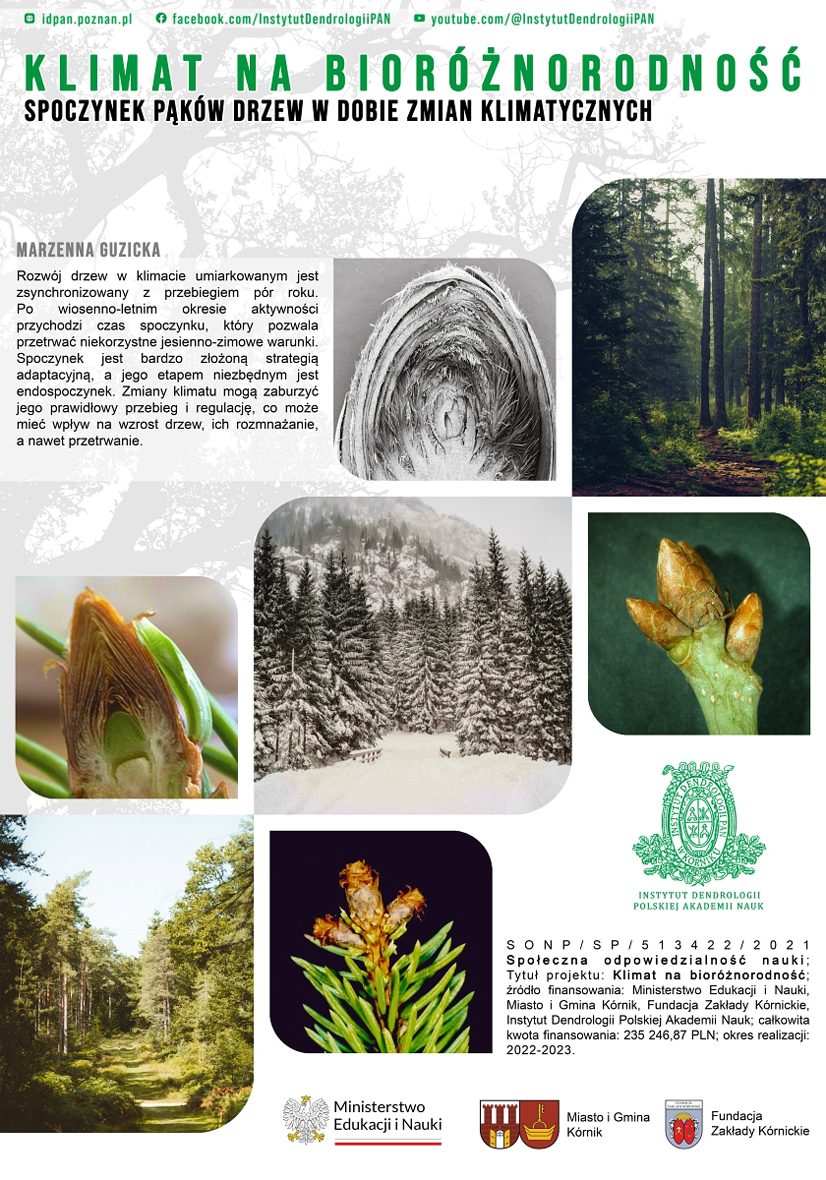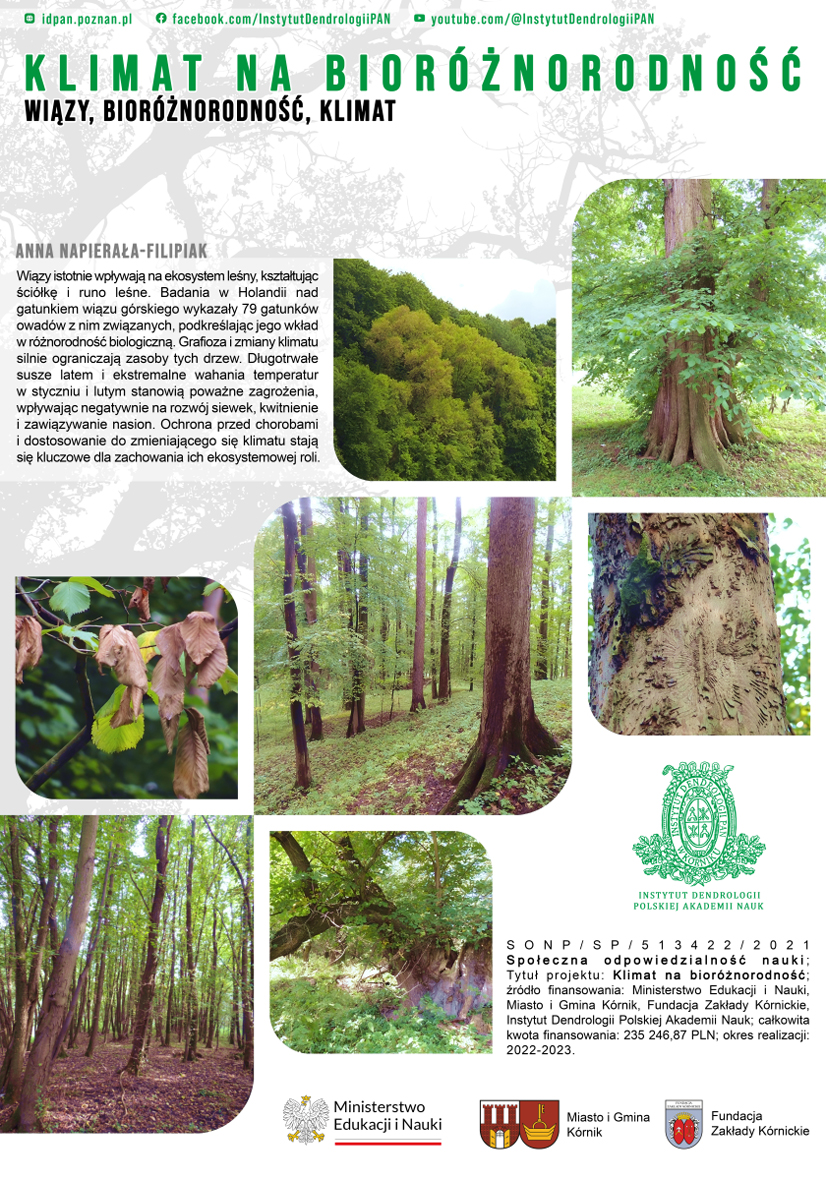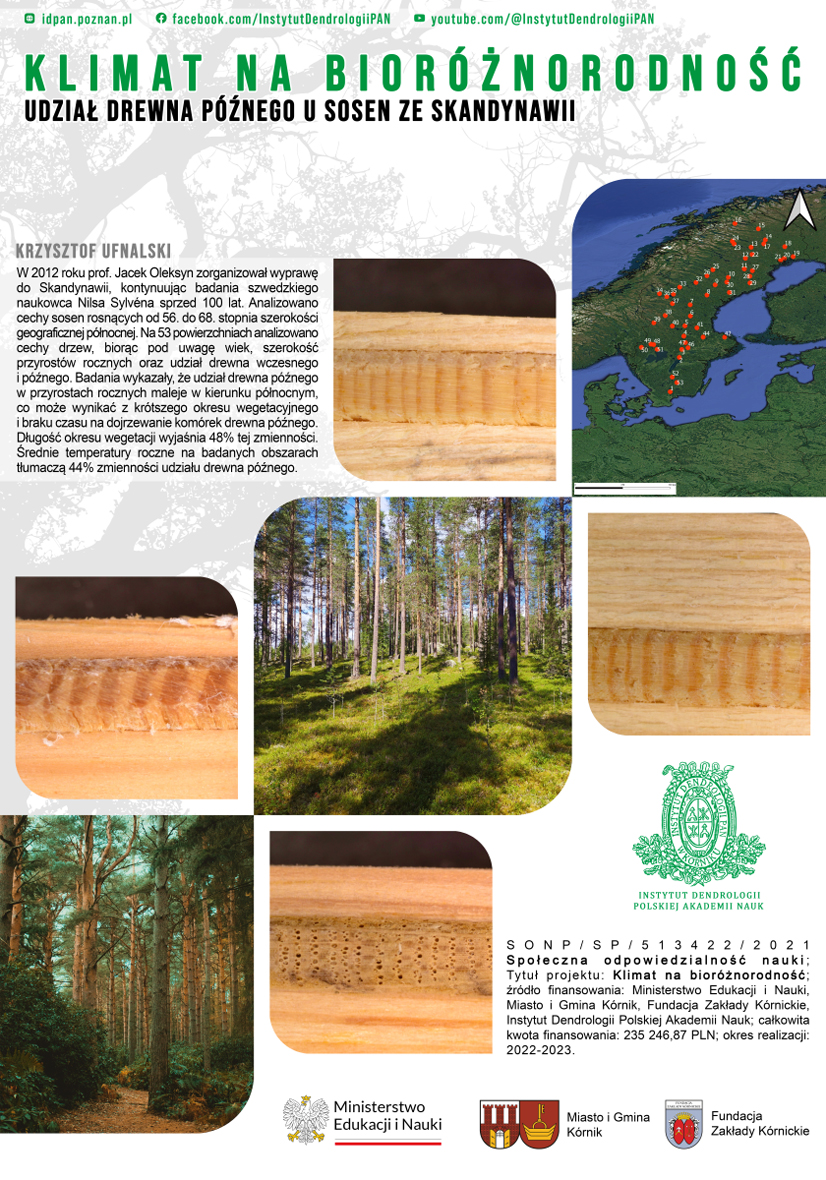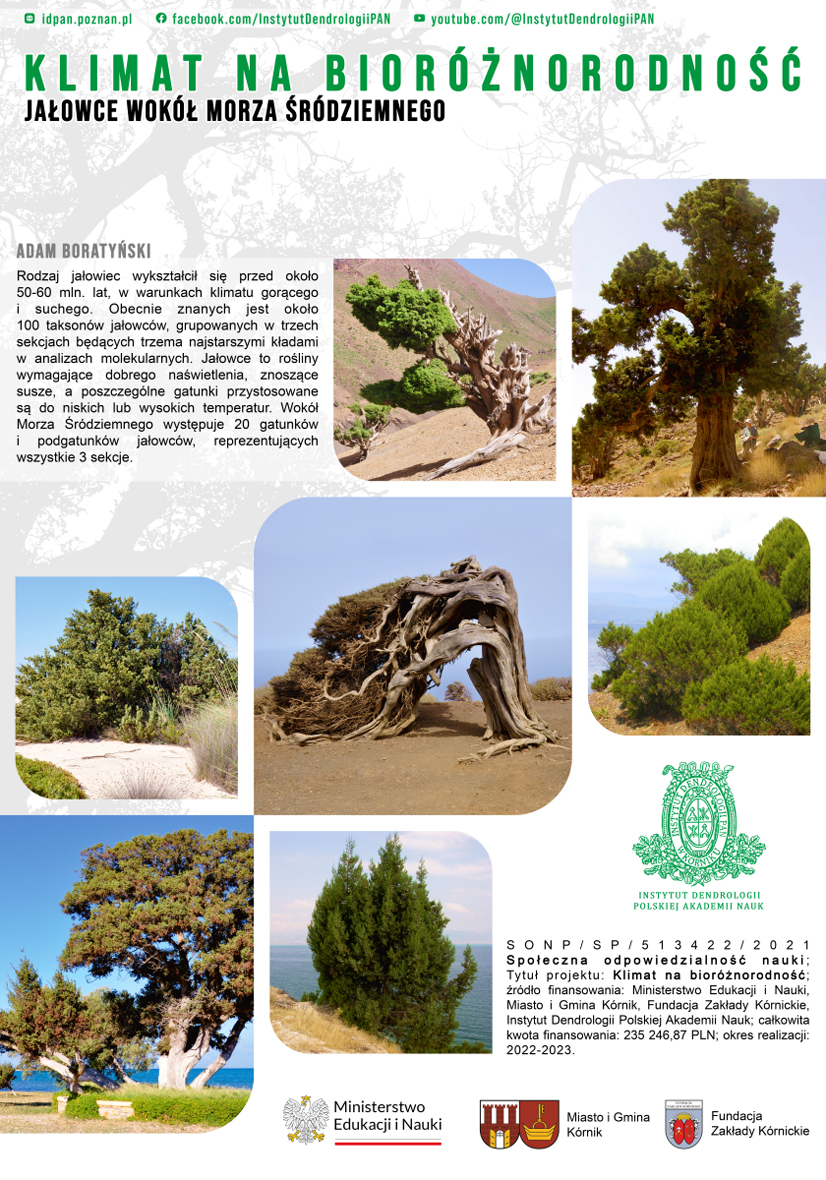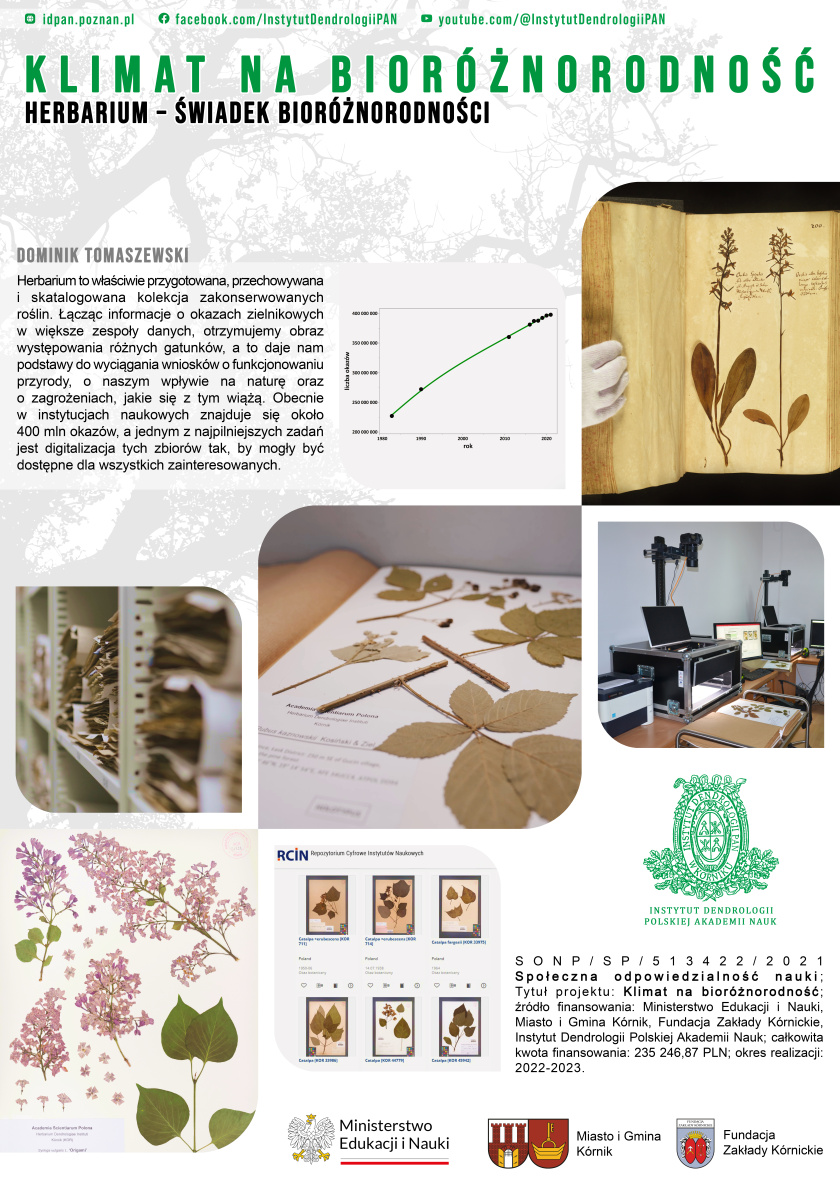- Details
- Written by: Anna Napierała-Filipiak
- Category: Climate for biodiversity
- Hits: 1747
We invite you to listen to Dr. Anna Napierała-Filipiak’s lecture entitled “Elm trees, biodiversity, climate.”
Elm trees significantly affect the forest ecosystem, shaping the forest litter and undergrowth. Research in the Netherlands on a species of mountain elm has identified 79 species of insects associated with it, highlighting its contribution to biodiversity. Graphiosis and climate change are severely limiting the resources of these trees. Prolonged summer droughts and extreme temperature fluctuations in January and February pose serious threats, negatively affecting seedling development, flowering and seed setting. Protecting against disease and adapting to a changing climate are becoming crucial to maintaining their ecosystem role.
- Details
- Written by: Krzysztof Ufnalski
- Category: Climate for biodiversity
- Hits: 1458
We invite you to listen to Dr. Krzysztof Ufnalski’s lecture entitled “Contribution of late wood in pines from Scandinavia.”
In 2012, Prof. Jacek Oleksyn organized an expedition to Scandinavia, continuing the research of Swedish scientist Nils Sylvén conducted 100 years ago. The characteristics of pine trees growing from the 56th to 68th degree of north latitude were analysed. Based on data collected from 53 plots, we analysed the characteristics of trees, taking into account age, width of annual growth, and the proportion of early and late wood. The study showed that the proportion of late wood in annual growth decreases in the northern direction, which may be due to the shorter growing season and lack of time for the maturation of late wood cells. The length of the growing season explains 48% of this variation. Average annual temperatures in the study areas explain 44% of the variation in the proportion of late wood.
- Details
- Written by: Adam Boratyński
- Category: Climate for biodiversity
- Hits: 1430
We invite you to listen to Prof. Adam Boratyński’s lecture entitled “Junipers around the Mediterranean.”
The juniper genus evolved before about 50-60 million years ago, under hot and dry climate conditions. Today, about 100 taxa of junipers are known, grouped into three sections that are the three oldest clades in molecular analysis. Junipers are light-demanding, drought-tolerant plants, with individual species adapted to broad range of temperatures. There are 20 species and subspecies of junipers around the Mediterranean, representing all 3 sections.
- Details
- Written by: Dominik Tomaszewski
- Category: Climate for biodiversity
- Hits: 1304
We invite you to listen to Dr. Dominik Tomaszewski’s lecture entitled “Herbarium - a witness to biodiversity.”
A herbarium is a properly prepared, stored, and catalogued collection of preserved plants. By aggregating information from herbarium specimens into larger datasets, we gain insights into the distribution of various species. This provides us with a foundation for drawing conclusions about the functioning of nature, our impact on the environment, and the associated risks. Currently, there are approximately 400 million specimens in scientific institutions, and one of the most pressing tasks is to digitise these collections to make them accessible to all those interested.
- Details
- Written by: Marzenna Guzicka
- Category: Climate for biodiversity
- Hits: 2790
We invite you to listen to Dr. Marzenna Guzicka’s lecture entitled “Dormancy of tree buds in the age of climate change”.
The development of trees in temperate climates is synchronized with the course of the seasons. After the spring-summer period of activity comes the period of dormancy, which allows them to survive the unfavorable autumn-winter conditions. Dormancy is a very complex adaptive strategy and its obligatory stage is endodormancy. Climate change can disrupt its proper course and regulation, which can affect tree growth, reproduction and even survival.
